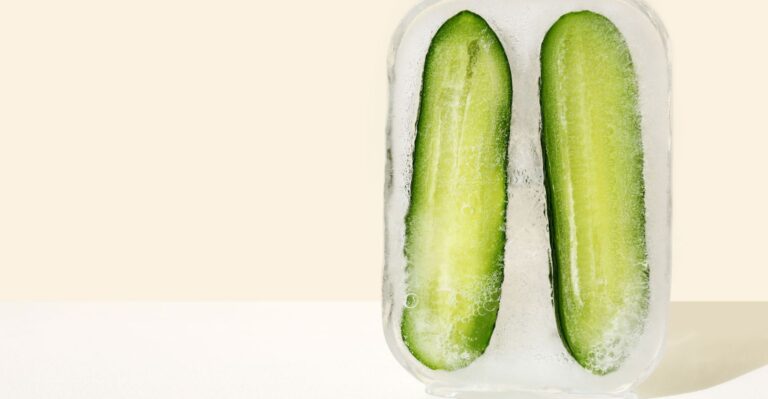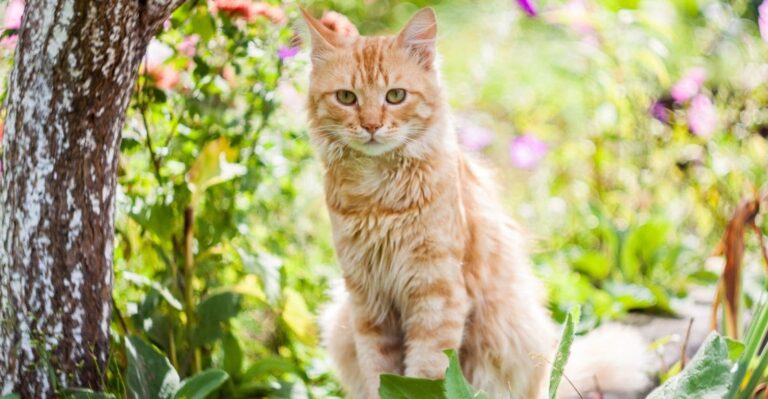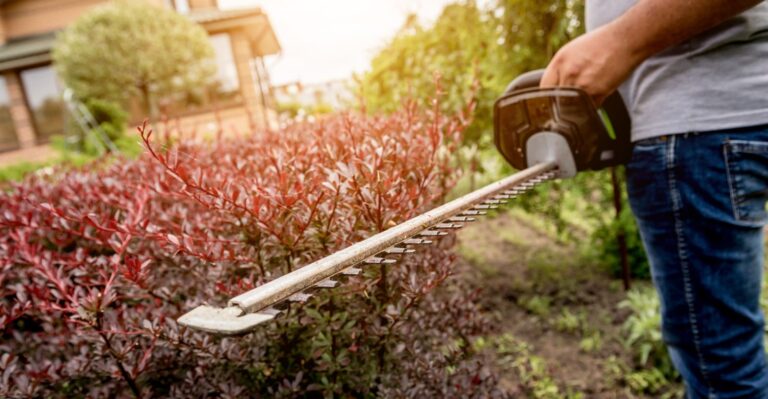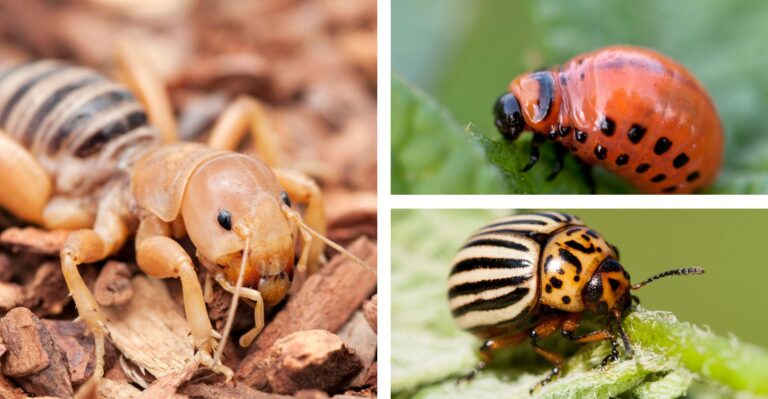Amazon has put together some great Home Gift Deals – save money and get your shopping done at the comfort of your home! Click here to see deals on Amazon
A wasp sting can be painful and, in some cases, dangerous to your health. The wasp venom contains serine protease and acids, which break down the skin and cause localized pain, itching, and inflammation.
The good news is that it’s only female wasps that possess stinger and venom glands.
If you want to know how long wasps live, the adult wasps live about four to six weeks before it dies naturally. But the majority of the wasp population never live their complete life as they die in the hand of predators.
A fully grown wasp nest can have anywhere from 5 thousand to 10 thousand wasps. They’re also a pollinator and kill pests that cause damage to plants.

How long do wasps live
Wasps are social insects, meaning they live in colonies. However, some are solitary wasps that live a secluded life.
The lifespan of a wasp varies depending on the species type. Overall, the average wasp lifespan is between four to six weeks, but the queens can live up to 8 to 10 months.
The most common wasp that is often found around homes and gardens is the paper wasp that belongs to the Polistes genus of social wasp. It has over 200 different species and is found all over the world except Antarctica.
A single wasp colony lasts on average 200 days from founding to producing worker wasps. Each colony can have up to four generations of wasp living together, including an egg stage that lasts around 13 days.
From egg to pupating, a larval paper wasp goes through five instars before pupating. The larva stage lasts about 24 days.
An adult wasp emerges from the pupa in 22 days, while adult Polistes wasp lives about 38 days. A wasp living indoor can live up to 10 days if it doesn’t get enough food and water.
Wasps, such as Yellowjackets and Paper wasps, are warm-season insects and start to build their nest from late spring to early summer. These wasp nests can last from three to four months if they don’t get attacked by predators such as birds and reptiles.
In cold weather, the wasps hibernate as there isn’t much food to eat, and their bodies can’t handle too much cold. Most wasps live during the summer and die when the cold season approaches.
What is the life cycle of a wasp?
The wasp life cycle is highly complicated and shared by other insect species such as ants, bees, hornets, butterflies, moths, and fleas. It goes through several different stages, such as egg, larva, pupa, and adult stages.
Egg stage: This is the most vulnerable stage of the wasp life cycle. Its survival depends on the mother wasp placing her eggs in the optimal location.
The mother wasp fiercely guards her clutch of eggs. She protects the young hatched larvae against predators and tiny parasitic wasps.
Larvae stage: When the wasp egg hatches, there emerges a larva that has a soft, flexible body. The larva molts periodically, shedding the old skin and expanding before the new one hardens.
The intervals between molts are called instars. On average, a wasp goes through 3–5 instars depending on the species type, and the wasp remains a larva for three weeks before transitioning to pupa.
Pupa stage: After three weeks, wasp larvae change into a pupa. The labial glands in the mouth of the larva excrete silk substances that it weaves around itself. This cocoon helps it insulate from excessive cold and protects from parasites.
Adult stage: Larva goes through a massive transformation while in a cocoon. After the process is complete, the adult wasp needs to chew its way out of a cocoon.
It becomes ready to feed on fruits and other insects. Adult wasp feeding on ripe fruit provides carbohydrates that it needs for a bustling lifestyle.
At the adult stage, most wasps die before they can reach an entire life. A male wasp that mates with the queen often dies afterward.
Other male wasps of some species establish territories. In a few species, males assist females after mating, guarding the nest while females gather building material or hunt for prey.

Where does wasp build their nest?
Wasp likes to build their nest in indoor, dark, and dry places, such as attics, sheds, cellars, and corners of the buildings. Wasps nests are also found in open areas such as on tree branches and underground.
Wasp nests are made of paper substance, which the wasp chews with its mouth. The wasp mouth contains a strong acid that releases a saliva secretion that kills or paralyzes the pest before the wasp stings and eats it.
Interestingly, this secretion also enables the wasp to digest the hard parts of the prey. The paper substance that they use to build a nest is known as a carton. It’s made up of a mixture of chewed-up woody plant stems, combs of saliva, and pulped insect parts.
Wasp nests are a major annoyance and, at times, can become a true health hazard. But the good news is that it’s not difficult to get rid of a wasp nest.
How do you get rid of wasps and prevent them from coming back?
Wasp, yellow jackets, and hornets are insects that are often nuances when doing barbecues, picnics, or even staying at home. These insects are often attracted by sweets such as soda, sweet fruit, syrups, and candies.
They’re usually attracted to sweet substances, and they will keep coming back if food is left uncovered. There is no doubt that finding yourself with a wasp nest in your backyard can be a serious problem, especially if you have kids or pets that play in your yard.
Follow these strategies to get rid of wasps and prevent them from coming back:
- Remove any wasp nest that you see a single wasp building around your home and garden. Queen wasp build these nests to form colonies and work alone, which means caring for the first batch of worker wasps. Remove the wasp nest and kill the queen at this time to prevent the nest from growing.
- Make a wasp catcher using a DIY kit. If you have to remove a small wasp nest, the easiest way to do is to fill a glass with water and add few drops of dishwasher soap to it. Fill up water up to the edge of the glass and press it against the wasp nest. In less than a minute, all wasps will drown, and the nest gets removed with water.
- Use commercial wasp sprays that you can spray to close the wash entrance to the nest. The solution also disintegrates the nest, killing any egg and queen wasp inside.
- If you see wasp making underground nests, you can also use water to drown the nest at night or use fire to burn it. Be careful when using fire, so it doesn’t spread anything beyond.
- Invite wasp predators such as bluebirds, sparrows, chickadees, and bee-eater into your garden that they can take off any wasp building nest on trees. You can install a bird feeder in your garden to attract these birds.
- Reptiles such as geckos are the primary reptilian predators of wasps.
Skinks, spiny, and fence lizards are others that will catch and kill the wasp - You can also buy wash traps like this from here that is a very effective and safe way to catch and kill them.
What is the difference between bees and wasps?
If you look closely at bees, you’ll see they’re similar to wasps in anatomy and behavior, with a few key differences. The individual hair on bees are branches that are effective in trapping pollen, while the hairs of wasps are unbranched.
You’ll often find both hairless bees and nearly hairless wasps in the wild, and many bee species are also sparsely hairy. Bees have a long tongue to reach nectar reservoirs inside flowers.
Some wasps species have similar configurations, but bees generally have a more complex, more extended version of the tongue.
The body of bees is designed toward carrying pollen loads while wasps body types are more predatory. Bees and wasps that lack pollen-trapping hairs may ingest pollen and regurgitate it when provisioning their nests.
Do wasp nest in the same place?
Wasp nest at a secluded place that provides safety to them from predators and natural elements. They usually don’t return to the same place year after year.
You may find the different wasp-making nests at the same spot if they find a location favorable to them. Wasp likes warm and isolated places to make their nest.
It’s the most common reason you will find them making a nest on the roof, attics, and anywhere inside your home. You should check out small holes and gaps in the wooden framing as that is the perfect hiding spot for wasps.

How to get the wasp out of your home if it quickly flies inside?
We all know that wasps aren’t something that we want in our homes, but what should you do if it gets inside your home?
The best way to remove it quickly is by using a towel or paper and directing it toward the door. Swing the towel around to change the wasp flying directly toward the door.
After arriving at the door, quickly open the door, and let it fly naturally outside, and shut the door.
You will often find wasps flying around at the end of summer or hot sunny days. During this time, wasps come out of their larva stage, and they’re hungry and looking for food.
The warmth inside the home and the smell of food attract wasps toward the house.
You should keep the door closed to prevent flies and insects from getting inside, but if it’s too hot, you can buy the door shield to let the air pass through without worrying about insects getting in.

Don’t forget to share this post








Wasps are important to the eco system. Please do not harm or kill them. In my experience, if you leave them in peace, they will not harm you. A wasp nest is built in the same place year after year under the eve of my house above my front door. We respect eachother’s space and existence. They have even protected me by stinging people with negative energy who have visited my home. They feel energy. I talk to them and send Reiki and gratitude regulary. Did you know that wasps are a good omen that brings strong structure to buildings? They have never harmed me or my pets, for 4 consecutive years now. Wasps deserve to live just as much as any other living being. My heart aches when the colony dies each autumn.